You are using an out of date browser. It may not display this or other websites correctly.
You should upgrade or use an alternative browser.
You should upgrade or use an alternative browser.
This site may earn a commission from merchant affiliate
links, including eBay, Amazon, and others.
Nope. 1964.Love that GTO. Looks like a ‘65
I worked with an engineer that spent time at Goodyear. He developed a rubber compound that would harden as its temperature increased. He said that it was a compound that would never wear out.
He presented it to management who quickly filed it away. His theory for the file 13 was that Goodyear would go out of business if tires didn’t wear out.
He presented it to management who quickly filed it away. His theory for the file 13 was that Goodyear would go out of business if tires didn’t wear out.
Interesting observation about the Michelins. I just replaced the defenders on the front wheels of our hand-me-down Camry, I'll replace the rears when it's time to rotate them. I got roughly 80,000 miles before the tread finally wore through.
On the other hand, my father in law's Tacoma has been sitting on four flats in his driveway with the sidewalls split open because he never drives it. Same defender tires purchased at roughly the same time.
On the other hand, my father in law's Tacoma has been sitting on four flats in his driveway with the sidewalls split open because he never drives it. Same defender tires purchased at roughly the same time.
Had a '65 that's a'64. Still nice though!Nope. 1964.
I have had old Bias ply tires outside and in the sun part of the day and 30 years old and Zero weather cracking.
Right beside that tire was a steel belted radial that was less than 10 years old and the tread began literally falling off while sitting in storage.
This I found while researching why new tires do not last very long.
Ben Kleschinsky – Medium
They Don’t Make Tires Like They Used To: The Forgotten World Of Bias Ply
I’m writing this article to talk about tires for the trailer queen. The owner that wants tires that can sit in a garage for decades without being driven. This is not about daily driving or road handling ratings.
It’s common today, even government law in some areas to recommend that you replace your tires every three or four years when they lose their tread. What if I told you this is a modern phenomena?
Beginnings Of Tire History:
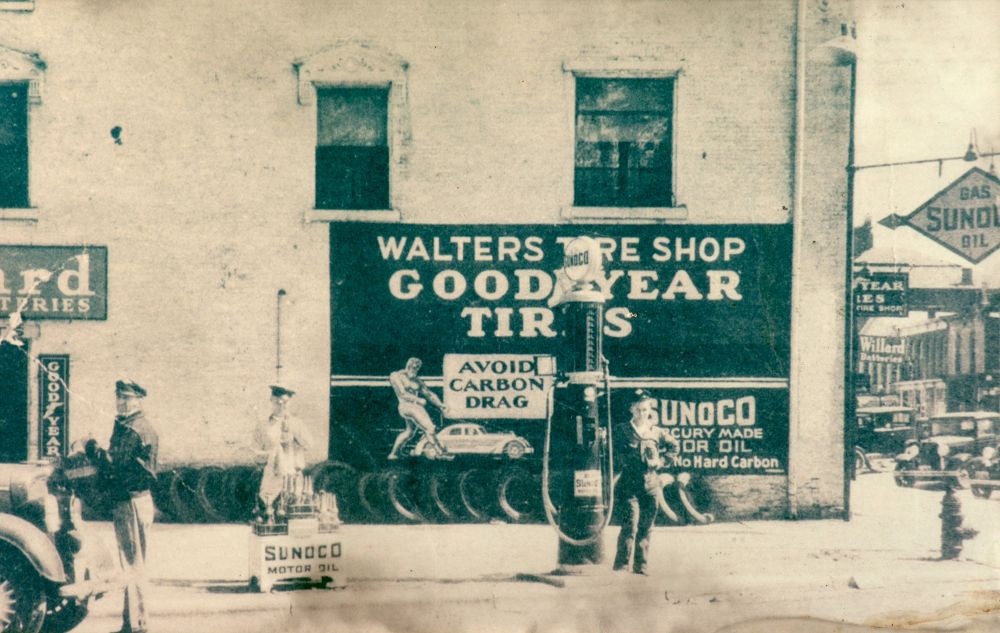
Original Walters bias ply Tire Shop taken in year 1932 in Marshall Michigan (Public Domain)
The rubber tire was first used practically by John Body Dunlop and made for the first bicycles. Hence the name Dunlop tires we used to hear. Prior to this we used wooden wheels.
It wasn’t brought over to American on cars though until the year 1911 when Alexander Strauss invented the inner tube tire. For the first time a rubber tire was able to support the weight of a vehicle. This my friends would become known as the Bias Ply Tire, and we used bias ply tires for the first 60 years of automobiles. This was back when you had to know how to change a tire, because bias ply tires are more prone to going flat while you’re driving. This wasn’t a big deal for anyone.
Bias ply tires used organic rubber and nylon technology. Nylon cords were wrapped at a 30–38 degree angle providing structure for the tire. These tires were made with nothing but organic rubber and nylon fibers, and a host of chemical compounds that would probably be illegal today including asbestos but worked well on the road. What if I told these tires had an indefinite longevity? What do I mean by longevity? I don’t mean tread performance or tread wear. In fact radials handle much better in terms of performance by itself and last much longer on the road I will explain down further in the article. By longevity I am referring to the tire’s ability to maintain its original structure.
Want some photos? Want some proof? Here are classic car owners who proudly wrote in to me for this story from across the country.
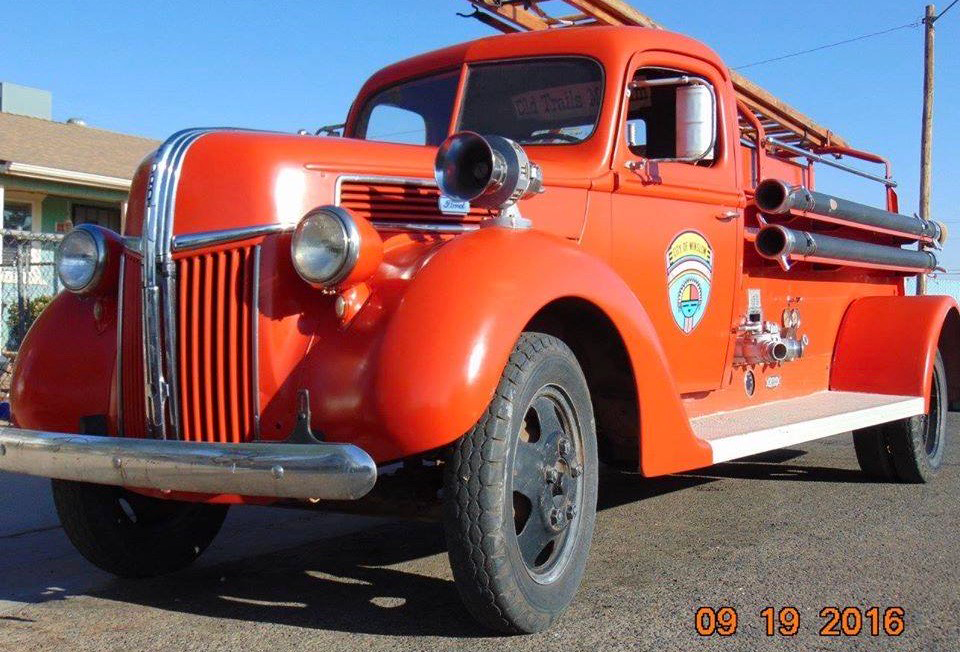
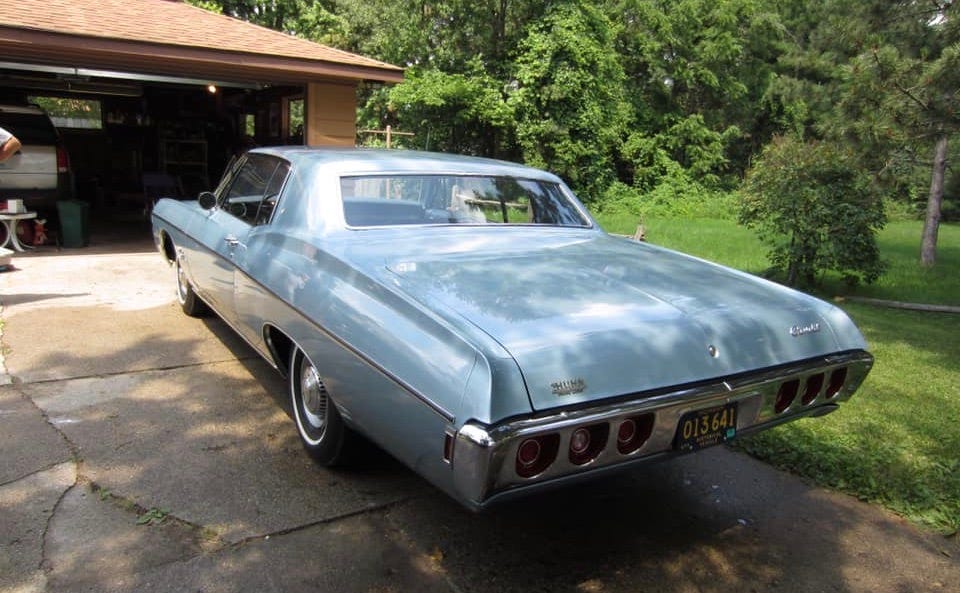
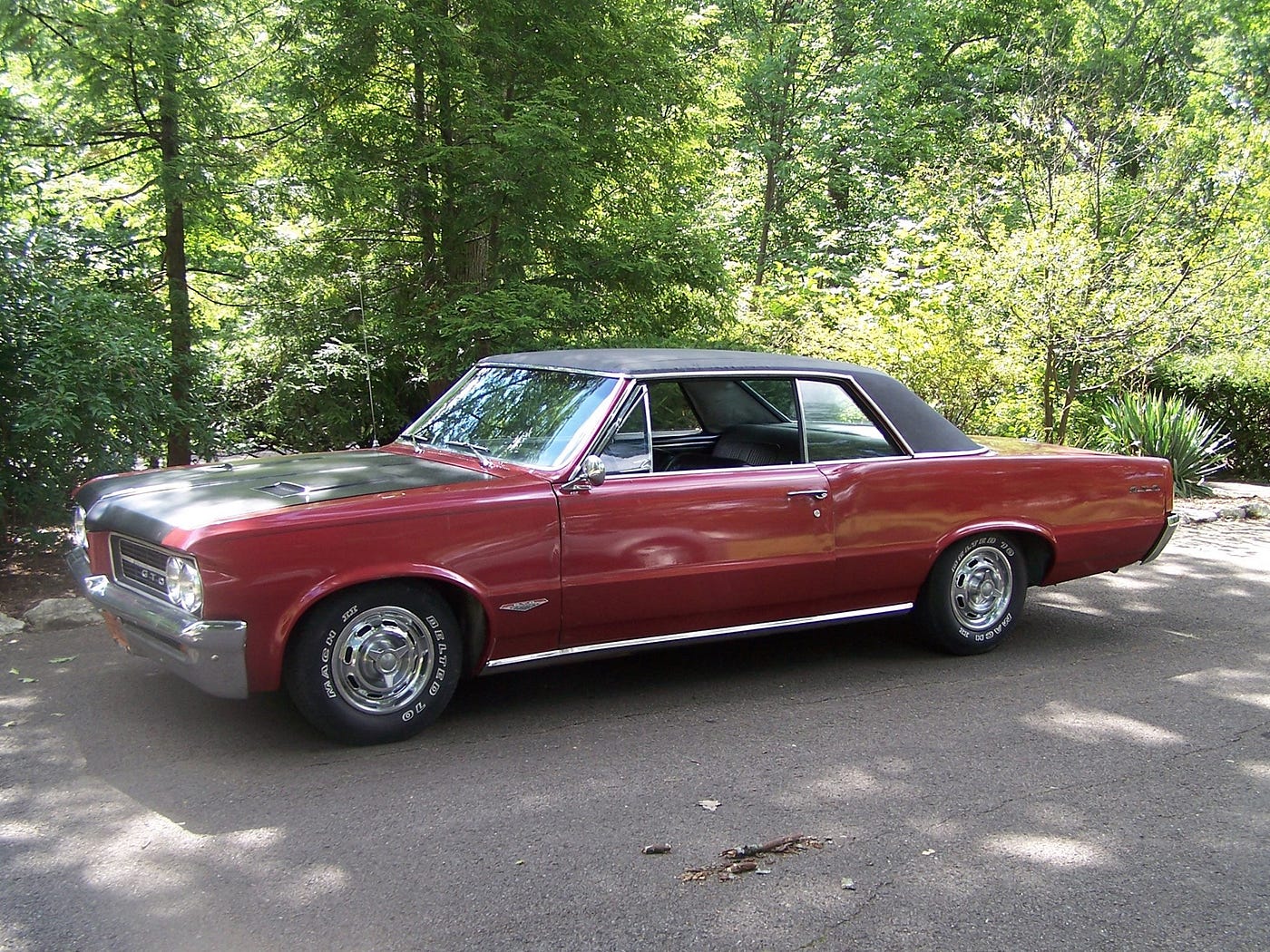
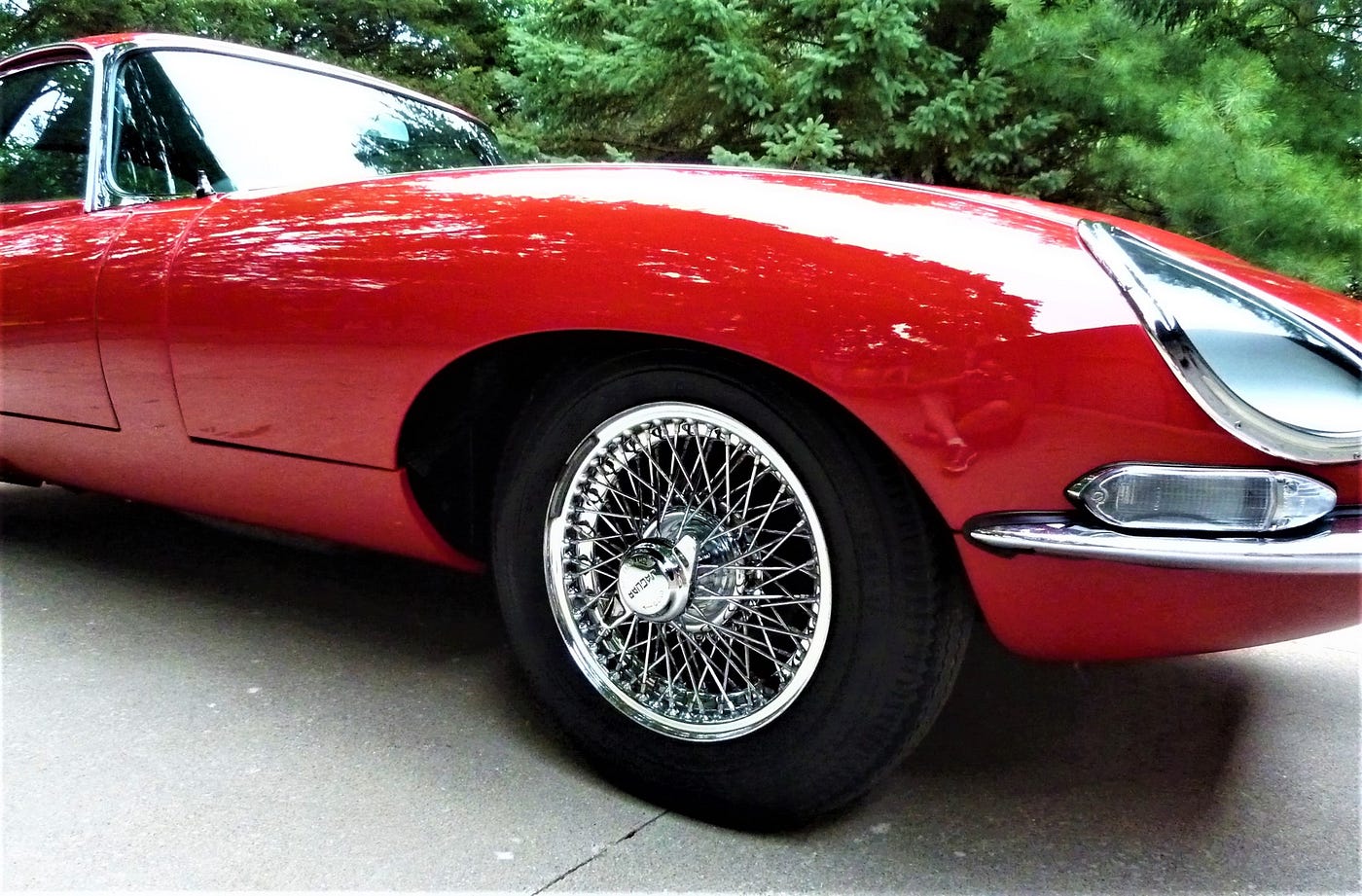
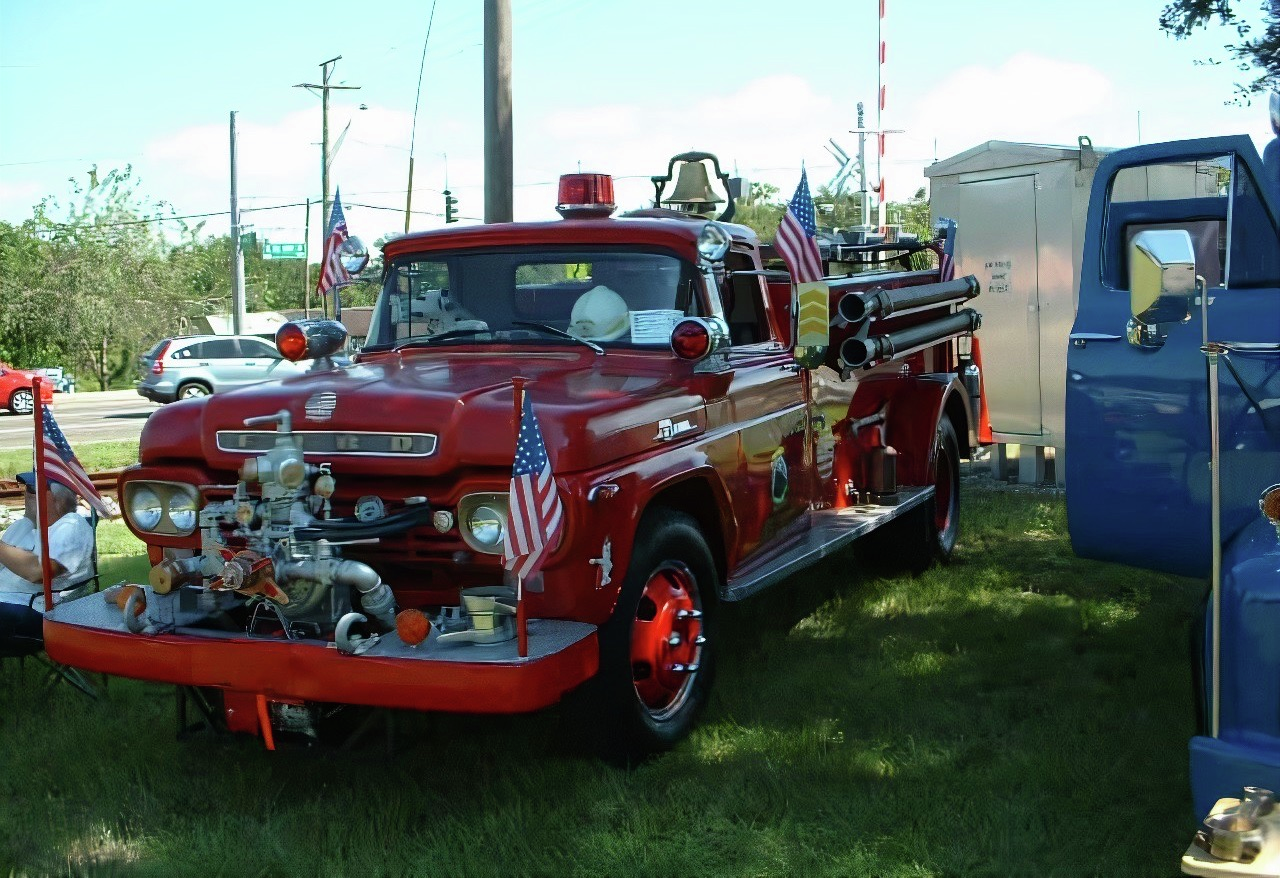
It was once not uncommon to see trucks, tractors, and yes cars keep their tires for thirty or forty years. We simply drove less than we do today. Tires received less wear, but bottom dollar is they maintained their integrity.
More proof? Look at this YouTube video where Jay Leno drives a Volga with original USSR tires on them from 1966. Jay Leno keeps a lot of original tires on his collection. Modern tires would not have held up that long. Now let me explain why bias ply tires actually provided superior performance.
The thing about bias ply technology is that today there are almost no tire shops that know how to handle them. In order to get the best performance out of a bias ply tire they have to be controlled. Most car owners back in those times did not eve bother doing this and it shows.
Bias ply white inner tire tubes shown in background 1963 movie “Mad Mad Mad Mad World”
It was calling tire shaping or tire truing, and this was back when it was considered a high skillset. Tire technicians were the doctors of the automobile industry, and you can think of that scene from Mad Mad Mad World. See those white round tubes in the background? That is what used to go inside of a tire. I always think of that scene. There used to be service shops suits and all that would trim your tires and tune your carb as they refilled your gas tank.
You see one of the downsides of bias ply is that they touch the road less often if not maintained. The tire is all one unit, sidewall flex is transferred to the tread. However it was possible to get even wear out of bias ply tires. Just ask my friends over at K&T Vintage Sports Cars in Bethlehem Pennsylvania, and no I am not getting paid to plug them. They truly do great work and are one of the few “real” tire shops left in the country.
I’ll get to modern tires below, but you can see that a bias ply tire does not have to wear unevenly. Uneven tread is not why the industry switched to radial tires. A true surface is much more important than tread wear.
Modern Tire Age:
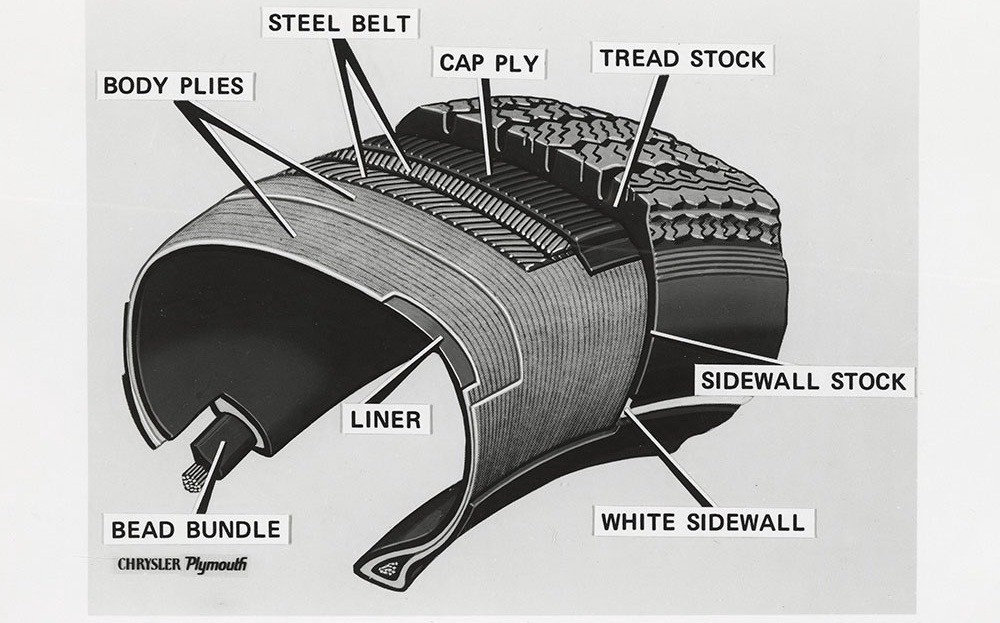
Sometime in the mid 1970’s belted tires started taking over. That was belted bias ply and radials. The first actual use of a belted tire was actually by Goodyear in 1967 and it wasn’t bad at first. The first belted tires were bias ply tires that used fiberglass belts instead of steel at a 90 degree angle. Trademarked as the Polyglas Tire and these in my opinion were the absolute best of both worlds. It provided a means of avoiding the common occurrence of flat tires and superior traction control with the road.
However Americans started wanting even more strength and became lazier you could say. The average teenager was no longer expected to learn how to change a tire on the side of the road or make roadside patches, and tire shops wanted an easier and cheaper way to service tires. The old tire shop was a thing of the past and lifetime tires would now disappear.
So in the consumers’s quest for a stronger tire we switched to steel. Steel reinforced tires. Introducing the Radial Tire that blew up in the mid 70’s. Radial tires are made with steel chords running at a 90 degree angle. Purely steel, with a much thinner layer of rubber surrounding it. It gave much improved traction control without the need for truing, and strength to prevent flats. We now use weights on our tires with less tread wear. The industry gave itself a high five, and consumers were never happier or so they thought. Starting up the drum roll.
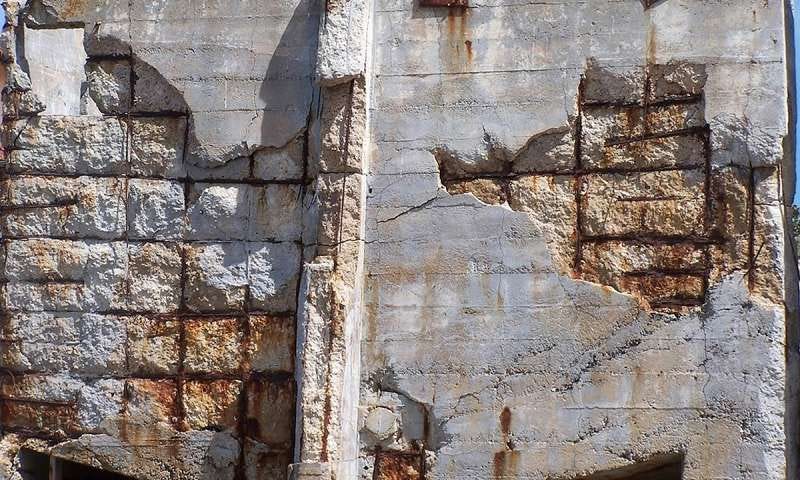
Example of concrete building structure cracking as steel rebars have rusted from moisture.
Did we trade convenience for longevity? Again I have to point out that my reference to longevity means an object’s ability to maintain its original structure. To understand why modern tires are inferior for longevity we can use a bridge or highway as an example. Or even concrete building. Reinforced concrete is made by running steel rebars through the concrete. This gives a reinforced structure that is stronger at the surface. It can handle more weight and vibration, but the problem shows up when it ages down the road. We often forget about this.
The concrete will literally rust from the inside out, because the steel rebars will corrode over time as moisture gets inside. Steel bars will corrode, and it will lead to buildings and roads cracking because of a cancer below the surface. That is exactly what happens with modern tires. However we can’t even call it rubber anymore its silicone, and silicone the industry uses today and it’s great at absorbing moisture. So when you drive tires down the road, moisture reaches the steel in the tire and it begins to rust from the inside out the second you drive it off the lot. It will even corrode just in storage.
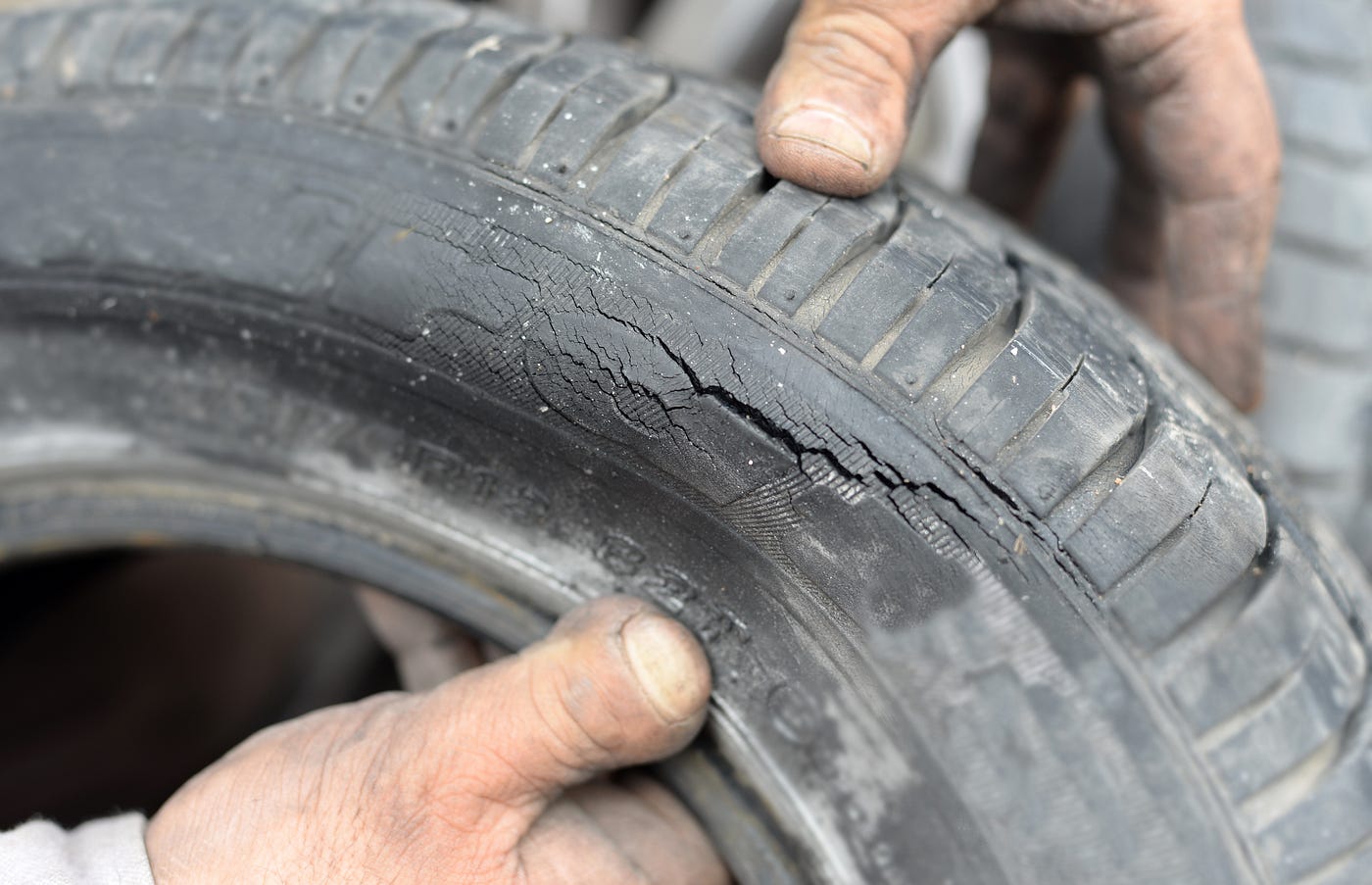
Photograph example of sidewall cracking which is common on radial tires. (Getty Images)
Pretty soon within four or five years a radial tire will experience two phenomenons. Sidewall Cracking and Separation. On radials the steel bars are your only layer of support. The rubber is a lot less firm than on a bias ply tire. Once your steel structure falls apart the tire itself implodes. If you’re lucky it will show sidewall cracking first. Other times it simply explodes when it gives way. You usually run into exploding tires on museum cars because the rubber never sees rain. It’s never driven so it shows no visible signs of corrosion. However inside is a different story.
To appease classic car enthusiasts the industry started developing steel belted bias ply tires, but those too suffer from the same problems. However they are a little better because you have a nylon structure that is also support the tire. It does not solely rely on steel. That is why many classic car enthusiasts endorse buying conventional bias ply tires over radials. If your car is going to sit in a garage for most of its future life, your radials are not going to stand the test of time. Bias ply tires can outlast the life of the car. It’s really not uncommon to keep bias ply tires for many decades if not more. Remember we’re not talking about treadwear here. Radial tires have longer treadwear. We’re talking about longevity of the original structure.
I like to compare the two tire technologies to single stage and clear coat paint. Clear coat paint is more durable to the outside world but will eventually crack and fail after less than a decade. Single stage paint will outlast the life of the car for a century, but will fade with age if not maintained. The same can be said about old fashioned tires.
Example of a modern Hancock tire factory in Jiaxing, Zhejiang province of China in 2011. (Reuters)
It’s also the source of the rubber. In large part we switched to cheaper synthetic rubber. When your source is cheap it is more prone to dry rotting. A good example is weather seals. I know this because I spent $1400 on rubber seals for my classic Mercedes. Mercedes brand sources rubber from Germany that will last the lifetime of the car. You can buy aftermarket weather seals made in Croatia that will last five years and crack.
Michelin to build $450m tire plant in Mexico
Michelin Doubles Capacity at Indian Factory
American tires are simply not manufactured in America anymore. Michelin, Pirelli, Continental, Bridgestone, Yokohama, Goodyear, and Cooper all have plants in Mexico and China. Goodyear and Cooper are the only two American companies left in the tire business. However you can still buy American made tires from all seven companies. There is an art to buying good quality tires. It still can be done but it’s tricky.
You have to walk into a tire shop and before you go to buy your tires, you have to demand to see the plant codes stamped onto the rubber. It’s called a DOT code, and you can read about the tricks to transcoding it below.
Tires Made in USA: American and Foreign Brands
Even if some tires are assembled in America, does that mean they were manufactured in America? Where is the rubber sourced? Where are the raw materials sourced? Are Americans growing rubber trees in their backyard?
My Take / Opinion:
Bridgestone announcing the opening of Hungary Tatabanya plant in 2019. (Bodnar/Shutter Stock)
Tire manufactures will now tell you that tires are meant to dry rot. That tires naturally will dry rot and crack after less than three years. Nonsense. This is the reason we no longer sell white walls anymore. You see that used to be a selling point on cars. You would commonly see ads that stated, “comes with the original tires”. That used to be a wanted option from used car dealerships and ads in the white pages of the local newspaper.
One company that is prone to dry rotting from the inside is believe it or not, Michelin. I have heard more horror stories from Michelin owners complaining about letting their tires sit for two years on their restoration, and then going to drive it only to find out the rubber is cracked.
So yes the radial technology we use in tires today makes it better for daily driving and easier maintenance for technicians, but tire manufactures have switched to cheaper synthetic materials that do not hold up sitting in somebody’s garage as a collector.
I truly believe that. We have made one trade off for another. A tire could be manufactured with very thick high quality rubber that would hold up sitting in a garage for decades without steel. Why not make tires with stainless steel? Cost may be the obvious first reason. Why can Mercedes rubber weather seals last fifty years, but rubber on a tire will crack in less than four? I really don’t buy that argument, and the proof is in the pudding in regards to why this happens. That is corrosion from an inferior design.
As a classic car collector, I would always consider buying a tire that may not last as long tread wise, but does not to dry rot. I only use regular bias ply tires on all my cars. Airplanes are a good example. Jet airline tires are made to withstand 300 ton falling onto the ground for landing, also bias ply.
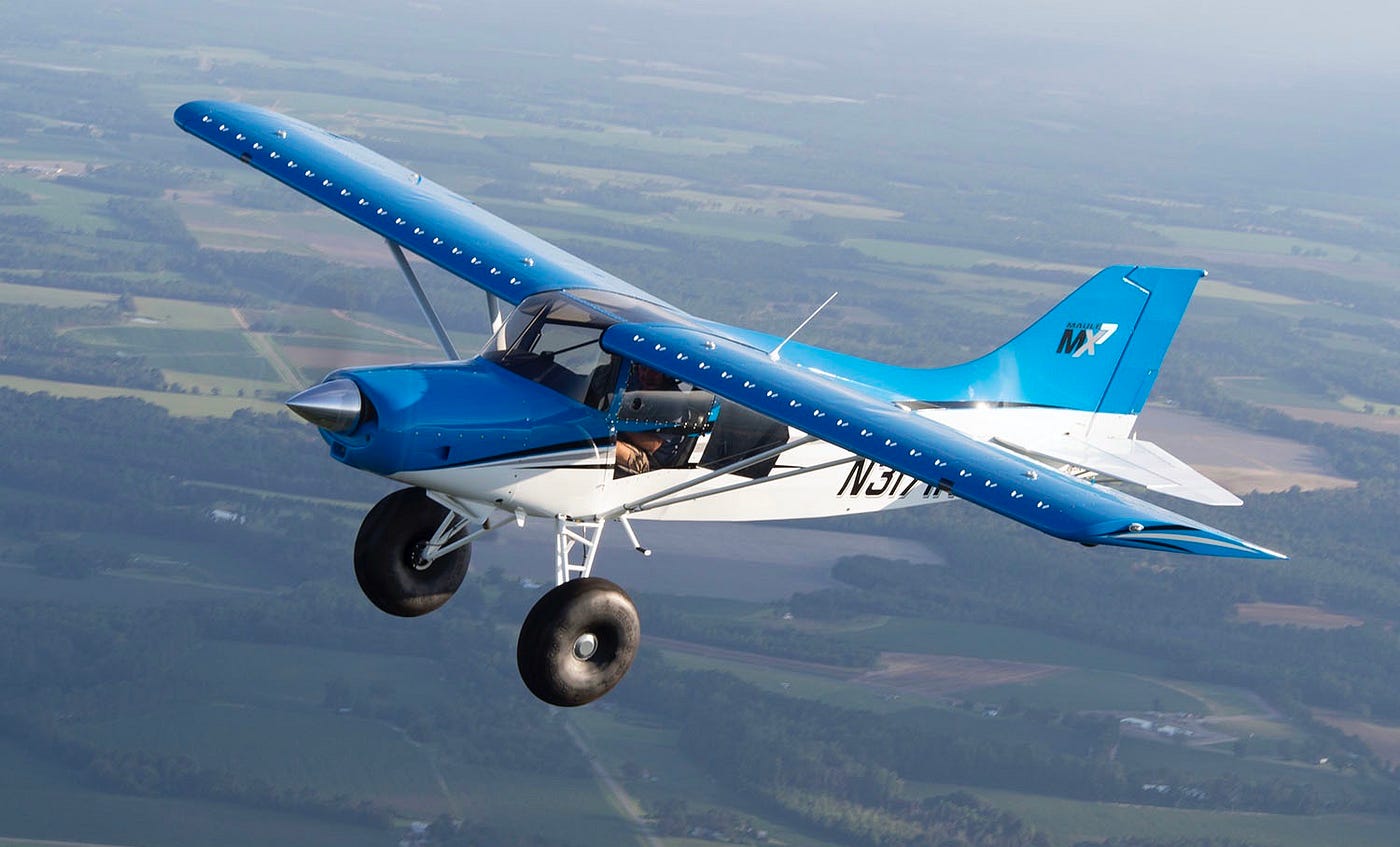
Maule MX-7–180 taking flight over Moultrie Georgia with bias ply tires in 2018. (P&P Magazine)
So that’s the final point I conclude with. Tires only last two or three years today before self destructing because that is what they are designed to do. Modern tires are engineered to provide a mode of transportation on modern vehicles with drivers who don’t know how to change a flat tire, at an economical price we can all afford. Tires don’t have to be made this way, and I hope the next generation of car enthusiasts continue to keep bias ply tires alive and tire truing alive for future classic car collectors.
Its why I buy Kenda tires for my full sized van, I can get four tires mounted and balanced for 298.00 cash. They will last 3-4 years, about the same as a set that cost 600-700
i got tired of airing up my 2 wheeler and wheelbarow tires i just got some solid rubber noflat replacements at Horro Freight when they were on sale ..problem solved..
Research and development. All major corporations have research and development. It's not to make a better product it's to calculate deterioration after the warranty epires. 2 weeks after the warranty runs out they start falling apart. I noticed this first in 1990 when I bought my 6 year old son a trampoline from Sam's. The matt had a 2 year warranty. Two weeks after the warranty expired the stitching holding the spring retainers started literally fally off. Within a month it was rendered totally useless.
Research and development. All major corporations have research and development. It's not to make a better product it's to calculate deterioration after the warranty epires. 2 weeks after the warranty runs out they start falling apart. I noticed this first in 1990 when I bought my 6 year old son a trampoline from Sam's. The matt had a 2 year warranty. Two weeks after the warranty expired the stitching holding the spring retainers started literally falling off. Within a month it was rendered totally useless.
So much of today's wood products (including tool handles) comes from 'farmed' trees that are planted for the purpose of quick-growth, quick-harvest, and quick-replanting. Such trees do not have near the wood strength of the more traditional 'old-growth' trees. In a way it's our own fault for demanding cheap, plentiful wood products to be available to us all year long.Funny you should bring that up. I've been bitchin gripin moanin and complainin about wheel barrow tires. Yep, wheel barrow tires.
I bought a 2 front wheel barrow at Atwoods in Stillwater in 2010.
The original tires lasted about 7 years.
Since then, I've purchased 4 new wheel barrow tires ( four !!! ) and they last about 2 years.
They're made in china, and they feel to my touch as if they are made with some plastic instead of all rubber.
I mean, when I want to use the wheel barrow, I want to use it right away, and not have to screw around with flat tires that leak air like crazy and just won't stay up. Maybe someone should market a Viagra for tires. Ha.
(That reminds me: What do you do with 365 used condoms? You recycle them into a tire, and call it a Good Year).
Cheap bastages.
They last about 2 years then won't stay aired up, just leak like crazy.
(It's not Atwoods fault, it's our fault for wanting the lowest possible cost and the mass retailers constantly demanding a lower price of products from their suppliers just to undersell the competition.
And don't get me started on trying to buy a good old American made quality replacement handle for some shovels and rakes. I've had these shovels and rakes for darn near 50 years, and they were my Dad's and Grandpa's before me. Yeah, you can buy a replacement handle, but they're just not as good quality wood as we had before the mass stampede to china for ever cheaper stuff.
Thus it becomes a perpetual cycle, just keep demanding less quality to undersell the competition, they all do it, and it's what I would call a vicious circle.
Similar threads
- Replies
- 3
- Views
- 684
- Replies
- 0
- Views
- 864
Join the conversation!
Join today and get all the highlights of this community direct to your inbox. It's FREE!
- Curated content sent daily, so you get what's interesting to you!
- No ads, no large blocks of text, just highlights for easy digest
- It's all totally free!
Enter your email address to join:
Thank you for joining!
Already
a member? Click here to log in














